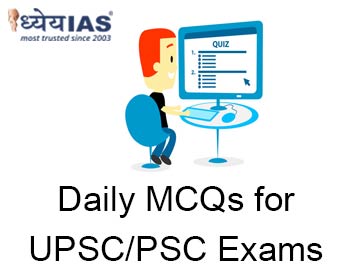Home > Daily-mcqs
Daily-mcqs 03 Jun 2025

Q1:
With reference to the International Organisation for Mediation (IOMed), how many of the following statements are correct? 1. IOMed is an international court that issues binding judgments in inter-state disputes. 2. It is headquartered in Hong Kong and focuses only on mediation. 3. Over 30 countries, including Indonesia and Pakistan, are founding members. 4. IOMed’s aim is to offer a non-confrontational alternative to traditional legal bodies.
A: Only one
B: Only Two
C: Only Three
D: All four
Answer: C
Explanation:
Statement 1 is incorrect — IOMed does not issue binding judgments like a court; it focuses only on mediation.
Statement 2 is correct — IOMed is headquartered in Hong Kong and claims to be the first international legal body dedicated solely to mediation.
Statement 3 is correct — Over 30 countries, including Indonesia and Pakistan, are founding members.
Statement 4 is also correct — its stated purpose is to move away from adversarial methods like arbitration or litigation and promote dialogue-based solutions.
Q2:
Which of the following statements about illegal immigration in India is NOT correct?
A: Illegal migrants can include those who overstay a valid visa.
B: Economic burden and labor market impacts are among the concerns about illegal immigration.
C: India grants refugee status to all illegal Bangladeshi migrants under the Citizenship Act, 1955.
D: Political instability and persecution in source countries contribute to migration into India.
Answer: C
Explanation:
Option (c) is incorrect — under the Citizenship Act, 1955, illegal immigrants are not automatically granted refugee status. In fact, many face detention or deportation. The Act defines illegal migrants as those entering without valid documents or overstaying. Other statements correctly reflect economic and political causes of illegal migration and concerns over resource strain.
Q3:
With reference to the Russia-India-China (RIC) trilateral format, how many of the following statements are correct? 1. The RIC format was started in the early 2000s as an economic bloc like BRICS. 2. One of its aims is to promote a multipolar world order. 3. It has remained inactive since the 2020 Galwan Valley clash. 4. Russia supports its revival to counter Western groupings like NATO and Quad.
A: Only one
B: Only two
C: Only three
D: All four
Answer: C
Explanation:
Statements 2, 3, and 4 are correct. RIC aims to promote a multipolar world, was inactive since 2020, and Russia sees its revival as a counter to Western alliances.
Statement 1 is incorrect — the RIC was initiated in the late 1990s and is a strategic dialogue, not an economic bloc like BRICS. Its scope includes foreign policy, security, and economic issues but isn’t structured like a formal economic group.
Q4:
Which of the following statements about Address-as-a-Service (AaaS) under the DHRUVA policy is NOT correct?
A: AaaS treats address data as a sharable service infrastructure.
B: It allows users to retain control over who accesses their address.
C: AaaS allows private sector delivery firms to modify government address records.
D: AaaS is designed to improve service delivery in both public and private sectors.
Answer: C
Explanation:
Option (c) is incorrect — AaaS does not allow unauthorized modification of official address records. It enables secure, consent-based sharing, but only the user or authorized entities can manage address data.
Options (a), (b), and (d) are correct — AaaS treats address data as infrastructure, promotes user autonomy, and aims to support cross-sectoral efficiency in public services and e-commerce.
Q5:
What is meant by “asymmetric threats” in the context of national security?
A: Threats that require UN Security Council approval to counter
B: Low-cost, high-impact threats like terrorism, cyberattacks, and proxy wars
C: Threats that involve direct conventional war between nuclear states
D: Natural disasters and pandemics affecting national morale
Answer: B
Explanation:
Asymmetric threats refer to non-conventional tactics that allow weaker adversaries to harm stronger powers by exploiting vulnerabilities. Terror attacks, cyber warfare, and cross-border infiltration are examples. These do not involve full-scale war but impose real security and economic costs, as seen in India’s challenges with Pakistan.